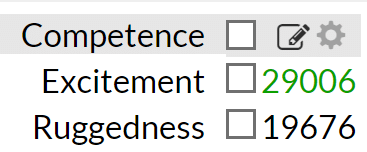Collaborative Text Editor
Content creators such as communication managers, journalists and knowledge workers need to quickly react to new events and announcements. Up until now, authors had to investigate a topic and search for the required information before starting to write or revise a document. The collaborative text editor addressing this shortcoming.
Ambient Search and Context Awareness
By merging these distinct phases, the webLyzard text editor simplifies and streamlines the content creation workflow and enables new forms of communication and collaboration. While authors are typing, the system analyzes the edited text in order to recommend the most relevant content from the chosen set of sources.

Using the Editor
Each defined topic has its own Wiki page, which can be accessed via the small editor icon that appears when hovering over the topic label. Once activated, multiple users can contribute and edit concurrently using a range of formatting tools. There is no need to save the document, as the latest version is always stored automatically (previous versions can be accessed using the document history function; see below).
Showing Semantic Annotations
Analyzing the edited text in the background, while authors are typing, not only yields accurate content recommendations but also yields a rich set of semantic annotations (= metadata elements). The status line below the text editor includes the date as well as the identified geographic location, which automatically sets the focus of the geographic map.
In terms of color coding, users can choose if and what type of additional metadata is being displayed. Per default, the editor highlights negation triggers such as ‘not’ and ‘never’, as well as positive and negative sentiment terms. The color of the sentiment terms varies in saturation, depending on the degree of polarity (the more vivid the color, the stronger the polarity).
Version History
The history is shown via the time slider, which allows retrieving previous versions of the document. Each snapshot archives the content of a document together with a time stamp and the name of the author. Authorized users can start editing based on any of the stored document instances.




